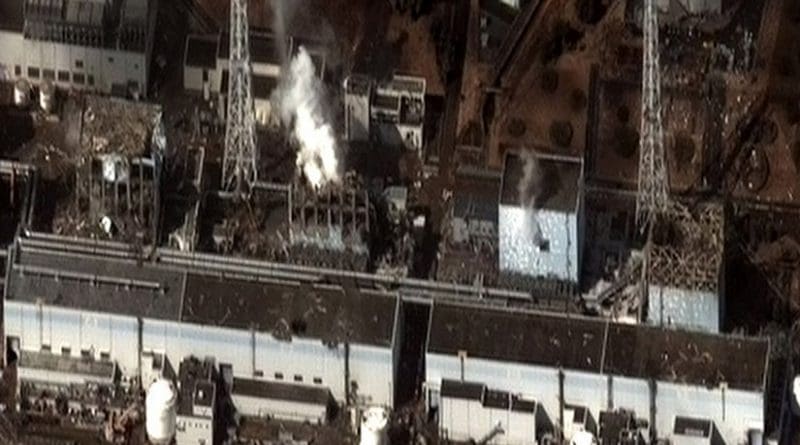Japan: Correct Reading Shows Radiation 100,000 Times Normal At Nuclear Plant
By VOA
The operator of a crippled nuclear power plant in northern Japan says the latest radiation readings at the earthquake and tsunami-battered facility are 100,000 times higher than normal — a figure sharply lower than reported earlier Sunday.
The new readings were taken just hours after incorrect readings of 10 million times higher than the acceptable norm were reported in water that had accumulated in a turbine housing unit of the Fukushima-Daiichi plant’s number 2 reactor.
The faulty data, which sent workers fleeing from the reactor 240 kilometers north of Tokyo, underscores the high-pressure challenges to several hundred workers struggling to provide accurate public information while trying to restart cooling systems at the plant. Workers have in some instances been conducting highly-sensitive electrical checks in the dark, under conditions that have been described as extreme.
Earlier Sunday, authorities said they also detected heightened levels of radioactive iodine in seawater within 300 meters of the plant. The nuclear safety agency said one-half a liter of the seawater contains the same amount of radiation that a person can safely be exposed to in a year. But officials said the ocean will quickly dilute the worst contamination, and that there is no immediate threat to marine life or seafood safety.
Radiation spikes were also detected last week in the water supply in Tokyo and nearby areas. Radiation has been found in vegetables and milk from farms near Fukushima, prompting a host of countries to ban imports of food from the region.
Efforts also are under way to drain highly radioactive pools of water that have accumulated in the reactor buildings, after two workers were hospitalized with radiation burns from stepping into a puddle of contaminated water. Plant officials say they do not yet know the source of the radioactive water.
Workers on Saturday sprayed fresh water instead of seawater into the damaged nuclear reactors, in an ongoing effort to keep damaged fuel rods from overheating and spewing more radiation into the environment. There was concern that salt in the seawater was clogging pipes and coating the fuel rods, interfering with efforts to restore the plant’s cooling systems.
The U.S. Navy is sending ships loaded with fresh water to the plant on Japan’s east coast.
Japanese Prime Minister Naoto Kan said Friday the situation at the plant remains precarious. He thanked emergency workers who he says are risking their lives trying to cool the plant’s reactors.
Japanese authorities have urged residents still living within a 20- to 30-kilometer radius of Fukushima to voluntarily leave the area. Residents within that zone were told previously to stay indoors to avoid the threat of radiation, while residents closer to the plant were told to evacuate.
Japan’s national police agency said Sunday the official death toll from the massive earthquake and tsunami that struck the east coast March 11 has risen to more than 10,600 people, with more than 16,500 others listed as missing. About 300,000 are living in temporary shelters.

